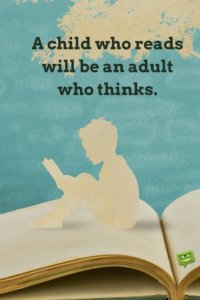The Limits of Reading Accommodations
A Story About Reading Accommodations
One day, a bit more than a month after we’d started therapy, I noticed that one of my clients started coming to our sessions very tired. When I asked her mother she explained that the girl was up all night, reading under the covers, with her recorded books. This girl, who previously had wanted nothing to do with books and was falling behind in her vocabulary, now considered herself a reader. This, I thought is what every parent wants (even though my own had complained much about my own late-night reading habits, I know they were secretly proud of me!) This is an example of a successful accommodation.
Reading accommodations allow students to access the knowledge and information that is available to their peers, despite their challenges with reading. They allow students to express themselves and share their stories without anxiety about spelling or handwriting. Accommodations are about access. For a student with mobility impairment, it may look like a ramp instead of stairs, allowing access to the same school other students attend. For a student with dyslexia, it comes in the form of dictation software, speech to text, or recorded text among others. I am so glad that the technology of our present-day has made these accommodations not only easy to access but is constantly improving their quality!
However, accommodations alone are not the best solution for many children. While this girl was enjoying and benefiting from her accommodations, we were relentless in our pursuit of improving her reading. Research tells us that the optimal age to learn to read is before the age of twelve. So, even though schools in the United States switch from “learning to read” to focusing on “reading to learn” when children are eight to nine years old, students that age who are behind can still make rapid progress!
And improving literacy skills beyond the age of twelve is still very possible! Research-based, structured literacy instruction has proven effective with people of all ages and is even used in adult education programs.
I’ve seen this meme on social media so many times: “A child who reads will be an adult who thinks”

And I understand why parents and educators would have a strong response to it. Reading is not the only way to learn.
Students who struggle with eye reading can still do amazing work reading. But I still believe that reading should be the goal. While students are learning to read and write, or if their best efforts at reading and writing still leave them falling short of their potential, accommodations are vital in bridging the gap.
But those accommodations will not teach a child to read or write. Contact us to begin the literacy instruction that will.
Improve Your Child’s Reading
Learn more about Lexercise today.
15-minute consultation
Tori Whaley
Since 2003, Tori has been a committed special educator, working as an elementary special education teacher. Her drive to improve outcomes for her students with dyslexia led her to the Neuhaus Education Center, where she was trained in Orton-Gillingham the summer after her first year of teaching. "I was so frustrated as a first year teacher, not knowing how to meet my students' needs. I spent the entire summer learning about dyslexia and was thrilled by my students' progress the next year!" Since then, she has used the method in English and Spanish with students in three states. In 2009, Tori completed her M.Ed. in Special Education at the Peabody College of Vanderbilt University, where she focused on educational strategies for students with learning disabilities. Tori joined the Lexercise team full-time in early 2014 after seeing students online for over a year. When she is not working, Tori loves to read, cook, garden, and spend as much time outdoors as possible.


Leave a comment